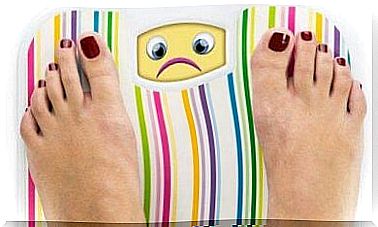Proven Forms Of Training For Low Back Pain

In this article we will talk about scientifically proven forms of training against low back pain. What are the best forms of training and which factors should you take into account when doing them?
Experts have studied how to tackle this problem and the only treatments that have proven effective for low back pain are:
- sports
- avoid (bed) rest
So, in this article, we decided to share three low back pain training forms, supported by scientific evidence. Try them today!
Training forms for low back pain
One of the reasons it’s so difficult to treat low back pain is that it’s often “non-specific pain.” At least 85% of people who seek medical attention for this have nonspecific low back pain.
Experts believe that the cause and aggravation of these types of complaints is a combination of factors such as:
- sedentary lifestyle
- overweight
- fear of movement
- financial, social or family problems
- anxious and depressive tendencies
Currently, exercise is the first-line treatment for non-specific low back pain. Below we describe three scientifically proven forms of movement for low back pain.
1. Strength training

In general, strength training is extremely beneficial for these pain symptoms, especially if you do a full-body training plan. In addition, it can also help prevent a relapse.
In order to design a good muscle strengthening plan, it is good to get advice from a personal trainer or your trusted physical therapist if your symptoms are very intense.
Strengthening exercises are beneficial to prevent and combat low back pain. However, what about strengthening your core muscles, your so-called ‘core’?
It seems that strengthening your core to treat back pain helps because it means you are moving. The effect is not caused by having weak abs or because they are getting stronger.
In fact, these workouts are no more effective than any other form of strength training in the long run for low back pain. It is also believed to be due to several factors such as:
- Due to the natural course of this condition, the pain usually subsides after a few weeks, whether you exercise or not.
- Strengthening your core gives the same effect as regular training, therefore it offers the same benefits as any other physical activity, at least in the short term.
- when you exercise, you are more aware of what you are doing and that helps you avoid movements that can aggravate your back pain. This allows the body to reduce the pain itself.
2. Endurance training
Endurance training is directly related to reducing chronic low back pain. Endurance training can help to reduce back pain in several ways:
- it increases blood flow and the transfer of nutrients to different parts of the body, improving the healing process of the injury or injury (if any).
- It reduces muscle stiffness and pain associated with low back pain.
- 30-40 minutes of aerobic exercise increases the production of endorphins, reducing the perception of pain.
- aerobic exercise can avoid the need for medications to reduce pain.
The results are comparable regardless of the type of endurance training. It also doesn’t matter if the workout is done at high or low intensity. The safest, easiest, and cheapest way to start this type of workout is simply walking.
In fact, walking can be just as effective as other non-pharmacological therapies for reducing pain, both in the short and long term.
3. Pilates, yoga or tai chi

These forms of training require a combination of physical, mental and spiritual concentration. As a result, they can help reduce the anxiety and stress associated with low back pain.
Pilates, yoga and tai chi exercises have been proven effective for lower back pain, as they can reduce pain. In addition, they can serve as aids in rehabilitation.
The choice depends on individual preference. All three forms of exercise are scientifically substantiated for combating non-specific low back pain.
Which of these training forms for low back pain is the best?
The best one for you is the training form that you can sustain for a long time. It doesn’t matter if you like Pilates or prefer to take regular walks. Whether you like going to the gym or prefer yoga. The most important thing is that you enjoy the form of exercise you have decided to do.
What all these forms of movement for low back pain have in common is that they move the body. So the name of the movement form doesn’t matter – you have the freedom to choose! Try one of these moves for low back pain and continue with the option that gives you the best results.
Consult your doctor before starting an exercise routine if you have other symptoms in addition to your low back pain, such as:
- sudden weight loss or weight loss with no apparent cause.
- numbness, stinging or little or increased sensitivity in the legs and feet.
- fever.
- dizziness.
- redness in the area.
- a history of hypertension, diabetes, osteoporosis, rheumatoid arthritis, or other disease.
In short, exercise is very beneficial for treating non-specific low back pain, while absolute rest can be harmful. That is why it is wise to choose a physical activity to get your body moving. You should of course always try to avoid overloading.









